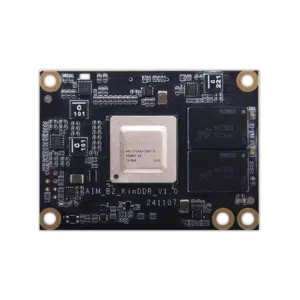Top 5 Edge AI Products Transforming the Computer World
Top 5 Edge AI Products Transforming the Computer World
Blog Article
How Edge AI Devices Permit Better Operations
Discovering the Features of Side AI Products
Synthetic intelligence (AI) has reshaped many aspects of our lives, and their request at the edge is creating waves in the tech industry. edge ai hardware which involves deploying AI models entirely on units like devices, cameras, and smartphones, has surfaced as a innovative approach to handling information and executing tasks. Unlike cloud-reliant AI techniques, side AI runs closer to where the knowledge is generated. That change provides a bunch of benefits, positioning edge AI as a casino game changer in fields which range from healthcare to retail to commercial automation.

Here, we'll examine a number of the crucial features of side AI devices and how they're surrounding the future.
Quicker Processing and Real-Time Answers
One of the very substantial advantages of side AI is their power to process knowledge domestically on the unit, rather than counting on a remote cloud server. The end result? Faster running rates and real-time responses. For example, in autonomous vehicles where every millisecond counts, side AI may analyze environmental information quickly to produce decisions, such as for instance braking or steering changes, minus the latency associated with cloud communication.
Based on new statistics, side AI products can reduce decision-making latency by as much as 75% in comparison to cloud-dependent solutions. That makes them perfect for time-sensitive purposes, such as for instance video analytics in surveillance or smart production systems.
Improved Knowledge Solitude and Security
Privacy and knowledge safety are growing issues in a very attached electronic world. Because edge AI handles information processing locally, sensitive data does not need to happen to be a cloud server, reducing the chance of interception or breaches. That localized approach allows companies more get a grip on around their data and ensures submission with solitude rules, especially in industries like healthcare and finance.
The raising use of they is basically pushed by privacy-conscious plans and a desire for on-device computation. Reports show that by 2025, more than 50% of AI-generated knowledge is likely to be processed at the edge to ensure higher data security.
Paid down Dependence on Net Connection
Cloud-based AI purposes rely greatly on stable internet connectivity to work effectively. edge ai box, on another give, flourish in conditions wherever connectivity may be unreliable or unavailable. Since edge AI techniques information directly on the unit, it can work easily without the need for regular access to a network.
For example, in remote agricultural options, side AI devices may analyze weather styles, soil situations, and crop information in real-time to assist with predictive farming, even though disconnected from the internet. It's projected that side processing can lower data transfer costs by as much as 70%, making it more cheaply viable in places with confined bandwidth.
Energy Effectiveness and Lower Costs
Side AI units are made to optimize power consumption. By handling information on-device, they minimize the necessity to send massive datasets to cloud hosts, cutting down both bandwidth use and energy costs. This makes an important big difference, especially in industries wherever energy performance is a critical factor.
Firms deploying edge AI often experience paid down functional costs because they avoid the recurring expenses associated with high-volume cloud storage and knowledge transmission. Furthermore, side AI's low-power equipment assures products can perform complex computations without draining resources, which makes it a sustainable selection for IoT (Internet of Things) ecosystems.
Tailored AI Options for Certain Use Instances

Yet another significant advantage of side AI is their capacity to deliver personalized solutions for special scenarios. Unlike simple cloud-based AI types, side AI systems may be fine-tuned to improve performance for particular applications. For instance, edge AI units found in retail controls can offer customized recommendations and seamless checkout experiences. Likewise, in industrial automation, they are able to monitor gear performance and estimate preservation needs with high precision.
That flexibility has generated an estimated 30% development in side AI deployments in the past year, highlighting their value in providing targeted answers across diverse industries.
Operating Development with Edge AI
Edge AI devices are at the lead of invention, offering unparalleled pace, privacy, and efficiency. By enabling real-time decisions, safeguarding sensitive and painful knowledge, reducing dependence on connectivity, and selling energy savings, they supply an intelligent, scalable answer for a variety of applications. Additionally, as technology innovations, the integration of edge AI is likely to increase, unlocking new possibilities and redefining how businesses influence AI.
Report this page